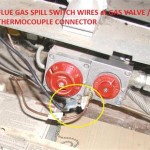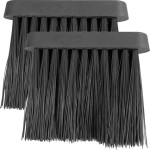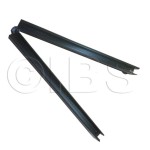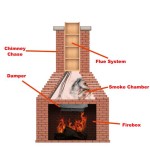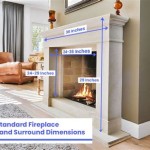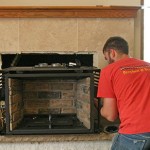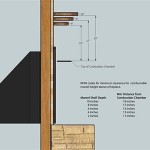Ventless Gas Log Fireplace Mantel: Considerations for Safe and Aesthetic Integration
Ventless gas log fireplaces offer an alternative to traditional wood-burning fireplaces, providing the ambiance of a flickering flame without the need for a chimney or flue. This characteristic allows for greater flexibility in placement within a home. However, the integration of a mantel with a ventless gas log fireplace requires careful consideration to ensure both safety and aesthetic appeal.
A mantel serves multiple purposes beyond mere decoration. It can act as a focal point for the room, provide a shelf for displaying decorative items, and, most importantly, offer a degree of protection to the surrounding wall from the heat produced by the fireplace. With ventless gas log fireplaces, the design and installation of the mantel are paramount to prevent overheating and potential fire hazards.
Understanding Ventless Gas Log Fireplace Operation
Unlike vented gas log sets, ventless gas logs burn with a nearly complete combustion process, meaning they consume almost all the fuel. This results in significantly reduced levels of carbon monoxide production compared to their vented counterparts. However, complete combustion requires sufficient oxygen. Therefore, ventless gas log fireplaces are equipped with oxygen depletion sensors (ODS) that automatically shut off the gas supply if the oxygen level in the room drops below a safe threshold. This safety feature is crucial, but it underlines the importance of proper ventilation and adherence to manufacturer specifications.
Ventless gas log fireplaces release all the heat generated into the room, which is part of their efficiency advantage. However, this also means surrounding materials, including the mantel, are exposed to potentially high temperatures. The heat can warp wood, melt certain plastics, and even damage drywall if proper clearances are not maintained. Therefore, the mantel design must prioritize heat dissipation and material selection.
Key Considerations for Mantel Design and Installation
When incorporating a mantel into a ventless gas log fireplace setup, several factors should be taken into account. These include the material of the mantel, the required clearances from the fireplace opening, and the overall ventilation of the surrounding area.
Material Selection:
The choice of mantel material significantly impacts its ability to withstand heat. Natural stone mantels, such as granite or marble, are highly resistant to heat and are generally considered a safe option. However, they can be expensive and heavy, requiring significant structural support. Wood mantels are a popular choice due to their aesthetic appeal and relative affordability, but they necessitate careful consideration to prevent scorching or ignition. It is recommended that wood mantels be constructed from hardwoods like oak or maple, which are denser and less prone to warping than softwoods. In addition, a heat shield or non-combustible material can be installed behind the wood mantel to further protect it from direct heat exposure.Manufactured stone or brick veneers can also be used to create a mantel that is both aesthetically pleasing and heat resistant. These materials offer a similar look to natural stone but are typically lighter and more cost-effective. However, it is crucial to ensure that the veneer is properly installed and that the adhesive used is rated for high-temperature applications.
Clearance Requirements:
Maintaining adequate clearance between the fireplace opening and the mantel is critical for safety. Manufacturers typically specify minimum clearance distances in their installation instructions. These guidelines are based on extensive testing and are designed to prevent the mantel from overheating. Clearance requirements can vary depending on the specific model of the ventless gas log fireplace and the material of the mantel. It is imperative to consult the manufacturer's instructions and adhere to these requirements meticulously. As a general rule, the greater the distance between the fireplace and the mantel, the lower the risk of overheating.Ventilation:
Although ventless gas log fireplaces do not require a chimney, adequate ventilation in the room is still essential. The fireplace consumes oxygen during combustion, and proper ventilation helps to replenish the oxygen supply and prevent the buildup of carbon dioxide and other combustion byproducts. The manufacturer's instructions typically specify the minimum room size required for safe operation and may also recommend opening a window or door to provide additional ventilation. Ensuring adequate ventilation not only enhances safety but also improves the efficiency and longevity of the fireplace.Safety Measures and Best Practices
Beyond the basic design and installation considerations, several additional safety measures should be implemented to ensure the safe operation of a ventless gas log fireplace with a mantel.
Firstly, a carbon monoxide detector should be installed in the room where the fireplace is located. This device will provide an early warning if carbon monoxide levels rise to dangerous levels. Regularly testing the carbon monoxide detector is crucial to ensure it is functioning properly.
Secondly, regular maintenance of the ventless gas log fireplace is essential. This includes inspecting the gas logs for damage, cleaning the burner assembly, and verifying the proper functioning of the oxygen depletion sensor. Following the manufacturer's recommended maintenance schedule will help to ensure the fireplace operates safely and efficiently.
Thirdly, never place combustible materials, such as curtains, rugs, or furniture, too close to the fireplace. These materials can easily ignite if exposed to excessive heat. Maintaining a safe distance between the fireplace and any combustible materials is crucial for preventing fires.
Finally, periodic inspection of the mantel is recommended, especially wood mantels. Look for signs of scorching, warping, or cracking. If any damage is detected, address the issue promptly by either replacing the mantel or adding additional heat shielding. Consistent vigilance and proactive maintenance are key to enjoying the benefits of a ventless gas log fireplace with a mantel safely and reliably.
Majestic Vent Free Gas Fireplaces
:max_bytes(150000):strip_icc()/ventless-gas-fireplaces-4160746-hero-f9d4bdcd9bd446eb84406de306f790ba.jpg?strip=all)
How To Pick Out A Ventless Gas Fireplace

Duluth Forge Dual Fuel Ventless Gas Fireplace 26 000 Btu Remote Control Antique White Finish 170105 The Home Depot

Duluth Forge Dual Fuel Ventless Gas Fireplace 26 000 Btu T Stat Control Antique White Finish 170130 The Home Depot

Duluth Forge Dual Fuel Ventless Gas Fireplace 32 000 Btu Remote Control Antique White Finish 170107 The Home Depot

Duluth Forge Dual Fuel Ventless Gas Fireplace 32 000 Btu Remote Control Antique White Finish Com

Empire Vail 24 Series Gas Fireplace Fine S

Pleasant Hearth 18 Dual Fuel Wildwood Vent Free Gas Log Set 30 000 Bt

Duluth Forge Full Size Dual Fuel Ventless Gas Fireplace With Mantel Buyersdepot Com

Fireplace S In Tenneessee Gas Logs More Admiral Propane

